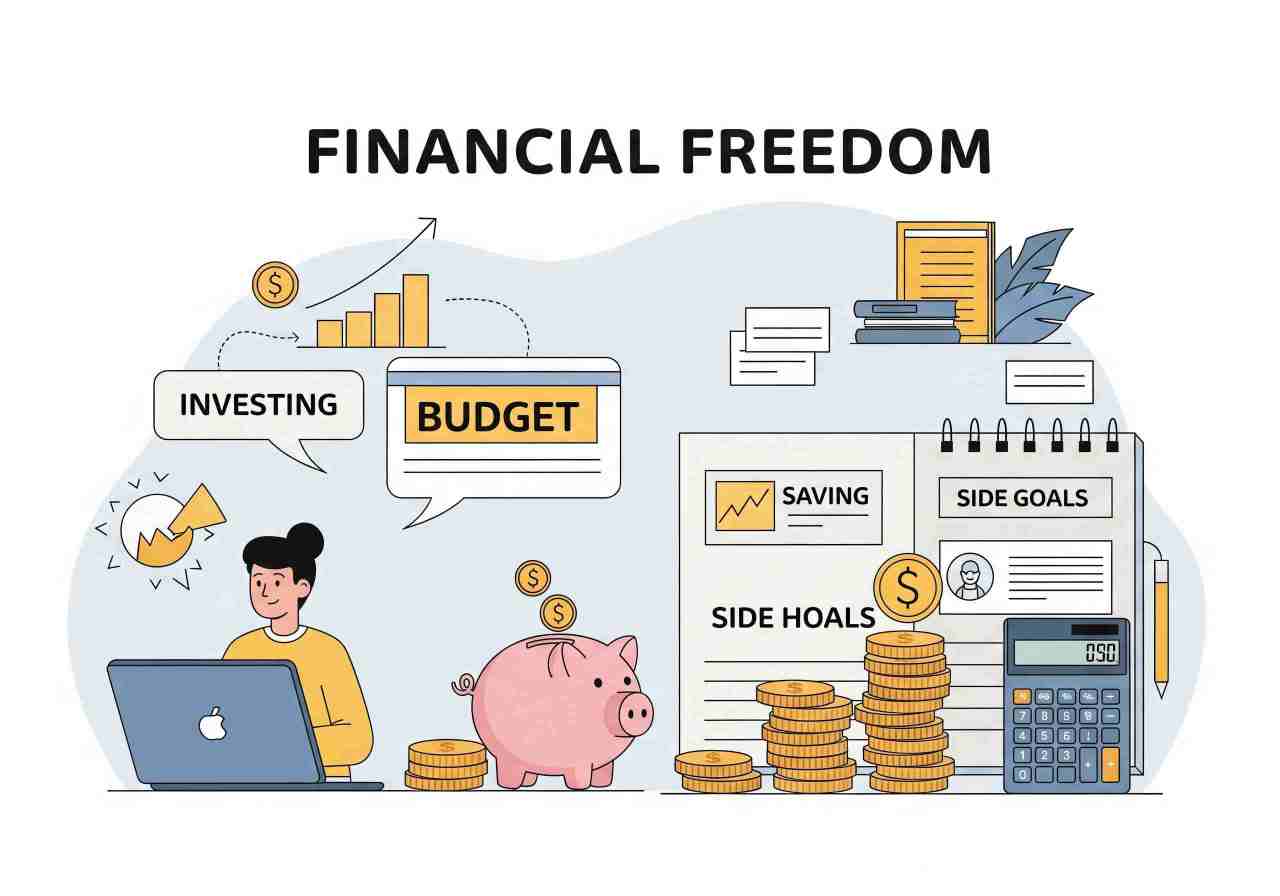How to Achieve Financial Freedom: Practical Tips for 2025

Financial freedom is the dream of millions across the globe. It means having enough savings, investments, and income streams to cover your living expenses without constantly stressing about money. While the path may seem overwhelming, the reality is that anyone can achieve financial independence with careful planning, discipline, and smart money strategies.
At CentsToSense.com, we specialize in providing practical, beginner-friendly advice on budgeting, saving, investing, and building additional income streams. This guide will walk you step-by-step through the proven strategies that can help you reach financial freedom faster in 2025.
What is Financial Freedom?
Financial freedom is the point where your passive income and savings cover your lifestyle expenses. You’re no longer reliant on a paycheck to survive, and you gain the freedom to choose how you spend your time. For some, it means early retirement. For others, it’s the ability to work on passion projects without financial pressure.
How to Build a Budget That Actually Works: A Step-by-Step Guide
In simple terms, financial freedom equals:
- No consumer debt (credit cards, payday loans, etc.)
- Consistent savings and investments
- Multiple income streams (not just one salary)
- Control over your money instead of living paycheck to paycheck
Step 1: Create a Budget That Works
Budgeting is the cornerstone of financial freedom. Without knowing where your money goes, it’s impossible to build wealth. A realistic budget helps you track spending, avoid debt, and prioritize savings.
Popular Budgeting Methods
- The 50/30/20 Rule – 50% needs, 30% wants, 20% savings.
- Zero-Based Budgeting – Every dollar is assigned a job until nothing is “left over.”
- Envelope Method – Cash-based system for controlling variable spending like dining out or entertainment.
Use tools like Mint, YNAB, or even a simple Google Sheet to track your expenses. Remember, what gets measured gets managed.
Step 2: Build an Emergency Fund
An emergency fund is your financial safety net. Life is unpredictable—job loss, medical bills, car repairs, or home maintenance can quickly derail your goals. Without an emergency fund, you’re likely to rely on credit cards or loans, pushing you further from financial freedom.
How Much Should You Save?
- Start small: $1,000 as an initial goal.
- Grow to cover 3–6 months of living expenses.
- Keep it liquid: Store in a high-yield savings account (HYSA), not in risky investments.
Step 3: Save Strategically
Savings should be intentional, not occasional. Automating your savings ensures consistency and helps you build wealth without constantly thinking about it.
Smart Saving Strategies
- Automate transfers directly from your paycheck to a savings account.
- Cut unnecessary expenses like unused subscriptions, takeout, or luxury purchases.
- Take advantage of rewards—cashback apps, discount coupons, and loyalty programs.
- Explore HYSAs and certificates of deposit (CDs) for better interest rates.
Step 4: Invest for Long-Term Growth
Savings alone won’t make you wealthy—investing is the key to long-term financial growth. The earlier you start, the more you benefit from compound interest.
Beginner-Friendly Investment Options
- Index Funds & ETFs – Low-cost, diversified investments perfect for beginners.
- Stocks – Higher risk, but potentially higher returns if chosen wisely.
- Bonds – Lower risk, steady income.
- Retirement Accounts (401k, IRA) – Tax advantages make them essential for long-term planning.
Tip: If you’re unsure where to start, consider using robo-advisors like Betterment or Wealthfront for automated portfolio management.
Step 5: Explore Side Hustles for Extra Income
In today’s gig economy, side hustles are one of the fastest ways to accelerate your journey toward financial freedom. Whether online or offline, extra income allows you to save and invest more aggressively.
Popular Side Hustles in 2025
- Freelancing (writing, graphic design, programming)
- Online tutoring or coaching
- E-commerce (Etsy, Shopify, Amazon FBA)
- Content creation (YouTube, blogging, podcasts)
- Ridesharing or delivery services
Remember: Your side hustle should align with your skills and interests to remain sustainable over the long term.
Step 6: Monitor and Adjust Regularly
Financial freedom isn’t a one-time event—it’s an ongoing journey. Your income, expenses, and goals will evolve over time, so your plan must remain flexible.
How to Stay on Track
- Review your budget monthly.
- Track your net worth quarterly.
- Rebalance your investments annually.
- Update your goals as life circumstances change.
Common Mistakes to Avoid
- Living paycheck to paycheck without a plan.
- Carrying high-interest debt while trying to invest.
- Ignoring retirement savings until it’s too late.
- Failing to diversify income and investments.
FAQs on Financial Freedom
1. How long does it take to achieve financial freedom?
It depends on your income, savings rate, and investment strategy. Some achieve it in 10–15 years with aggressive savings (FIRE movement), while others take 30+ years.
2. Can I achieve financial freedom on an average salary?
Yes! The key is living below your means, avoiding debt, and consistently saving and investing. It’s about discipline, not just income.
3. Should I pay off debt before investing?
Yes, especially if you have high-interest debt (like credit cards). Once that’s cleared, you can balance investing with saving.
4. What is the FIRE movement?
FIRE stands for Financial Independence, Retire Early. It’s a lifestyle that emphasizes extreme savings and frugality to retire decades earlier than traditional timelines.
5. What’s the first step I should take today?
Start by tracking your spending for one month. Awareness is the first step toward control. From there, build a budget and start saving consistently.
Master Your Money in 2025: Proven Budgeting, Saving & Investing Strategies
Final Thoughts
Achieving financial freedom isn’t about luck—it’s about strategy, consistency, and patience. By budgeting smartly, building an emergency fund, saving intentionally, investing for growth, and exploring extra income streams, you can create a life where money works for you, not the other way around.
Ready to take the first step? Explore more guides at CentsToSense.com and begin your journey to financial independence today.